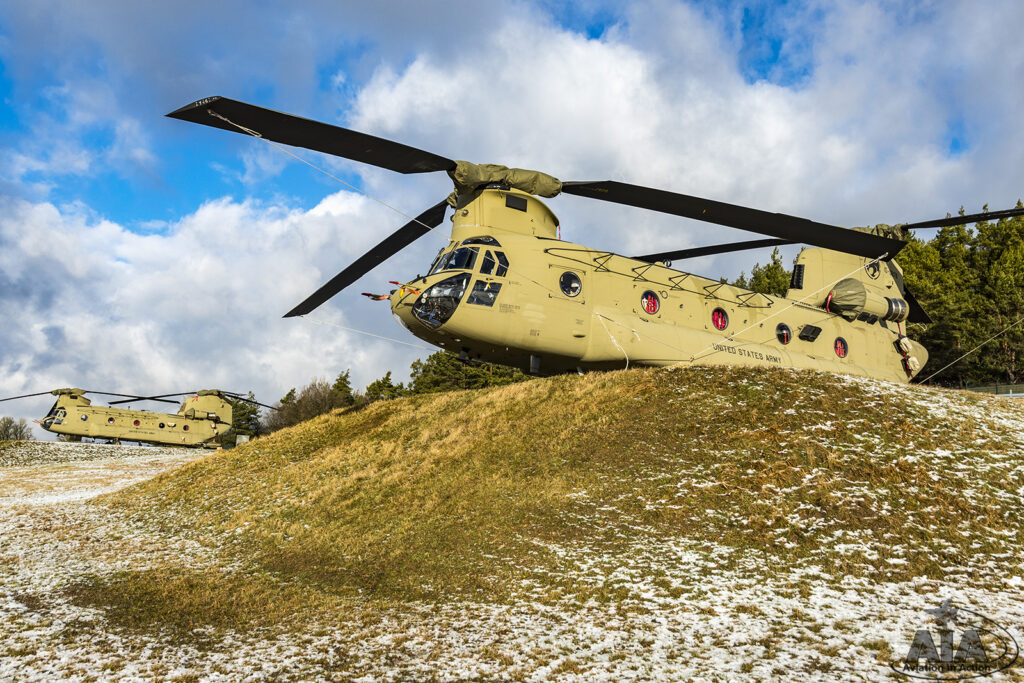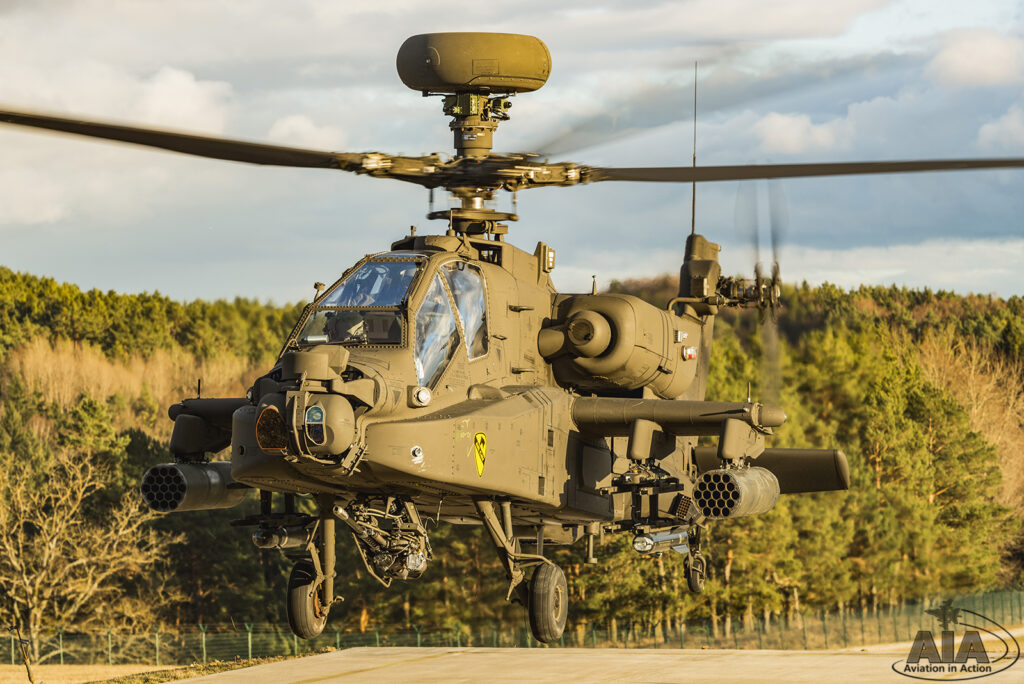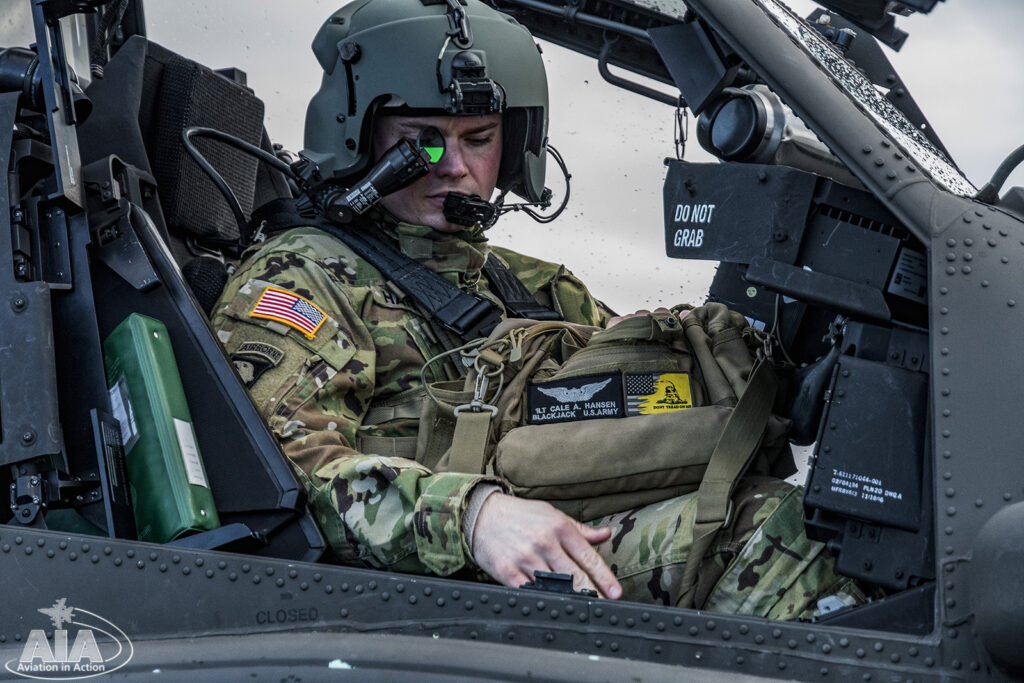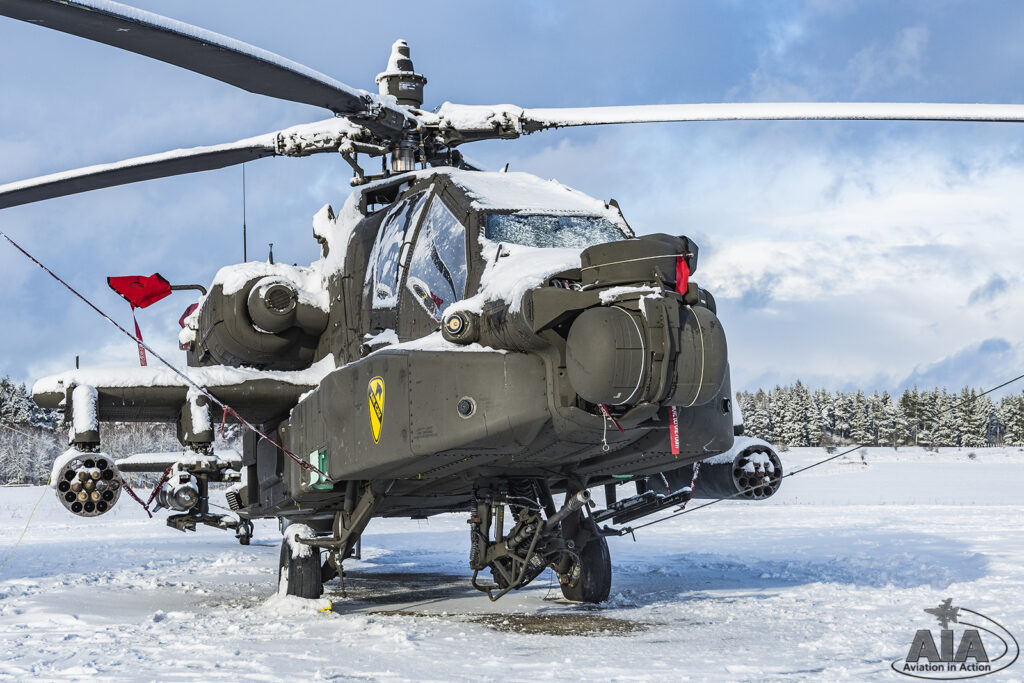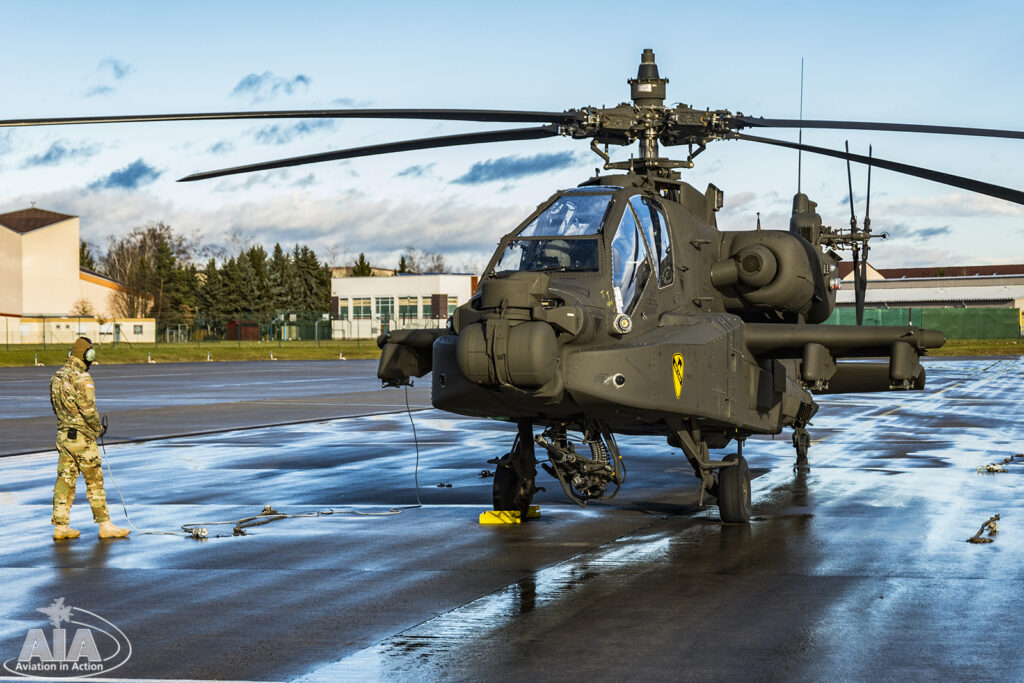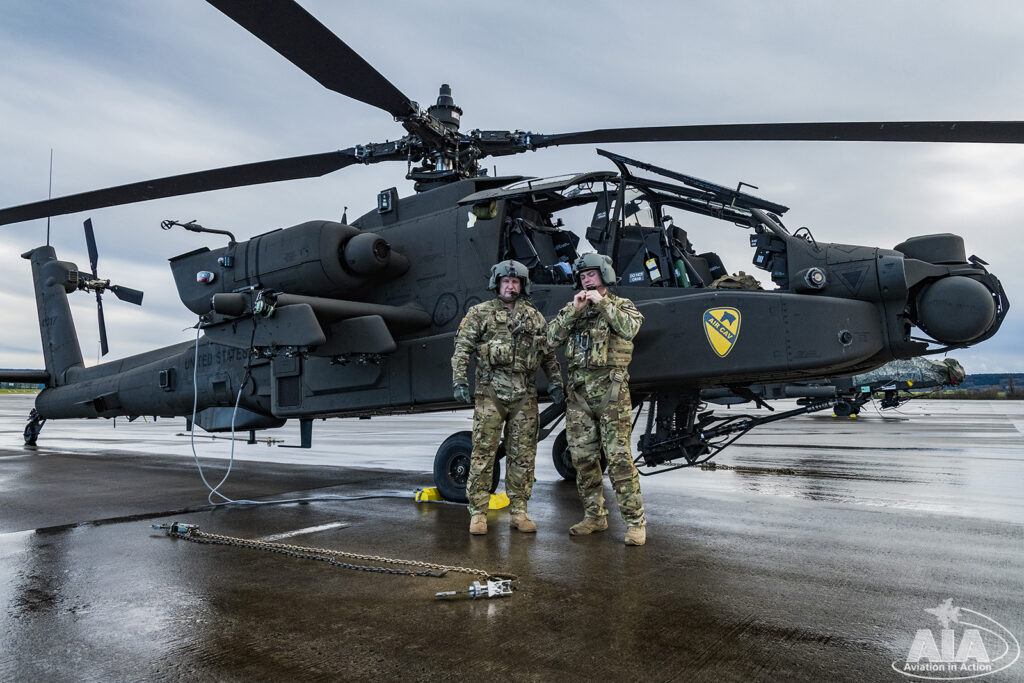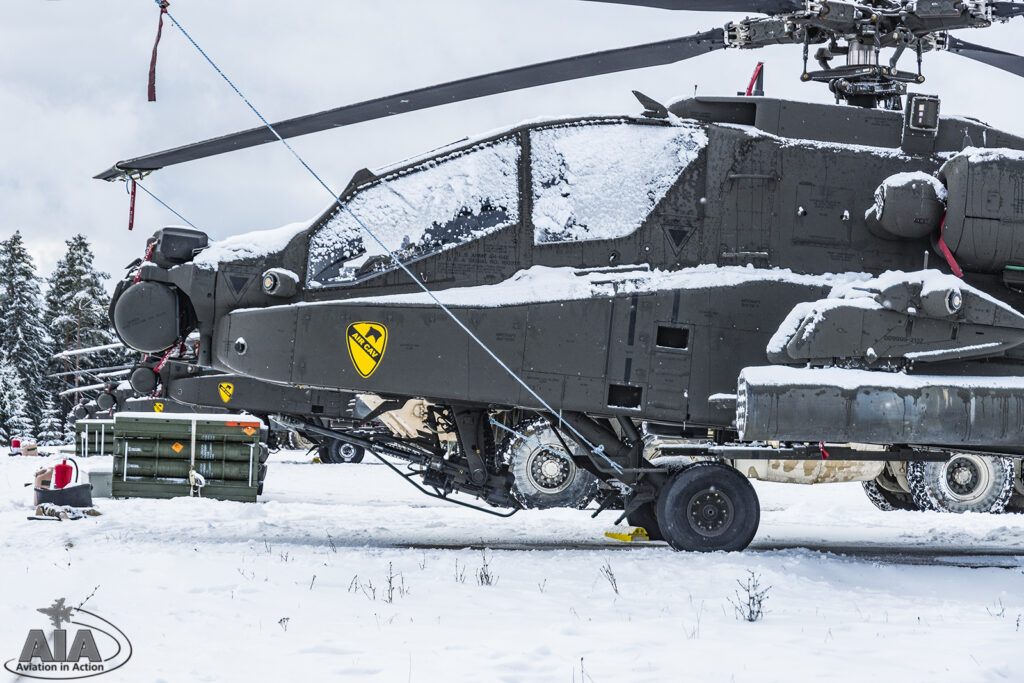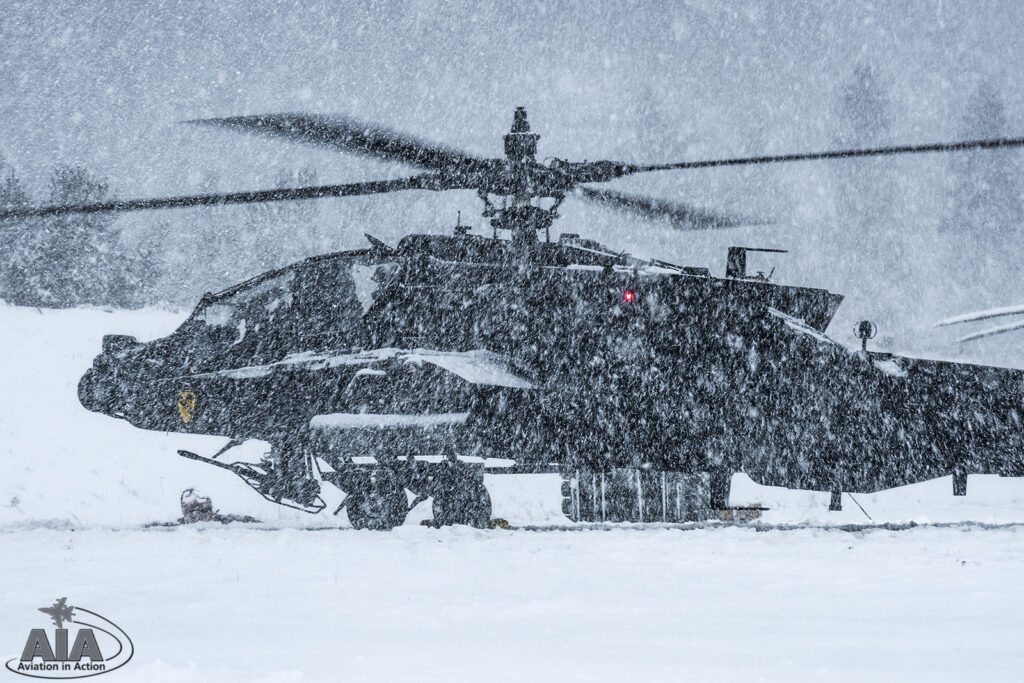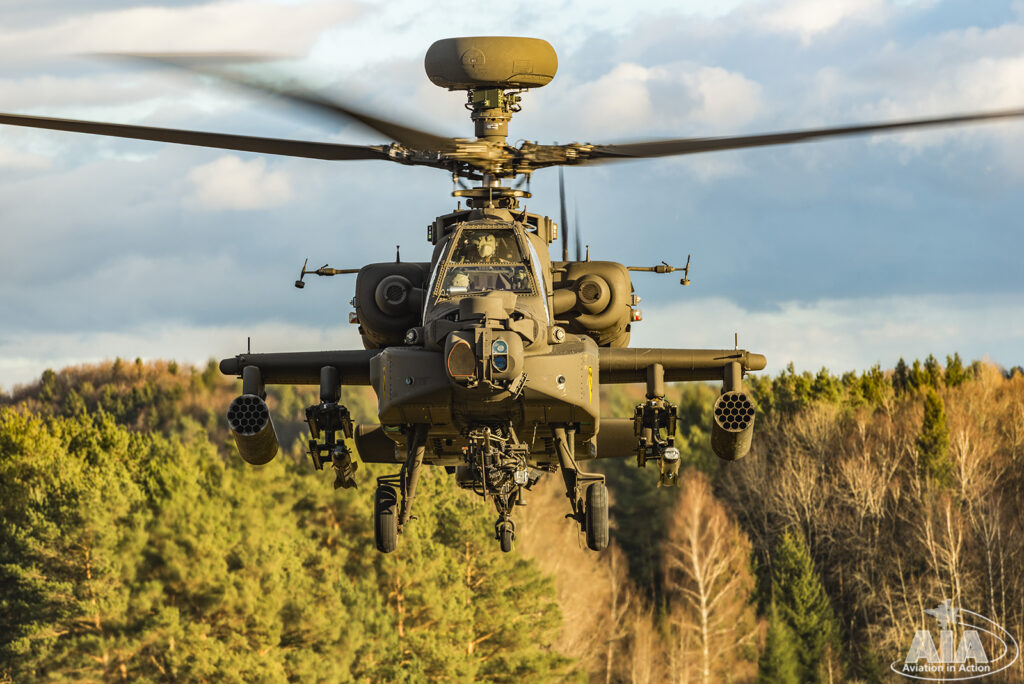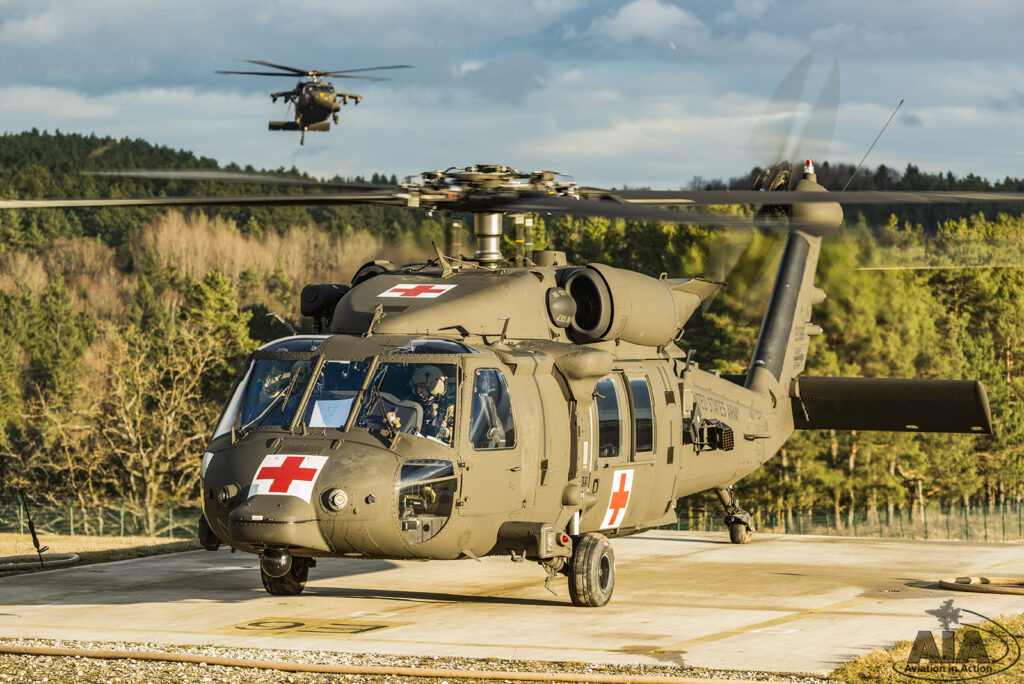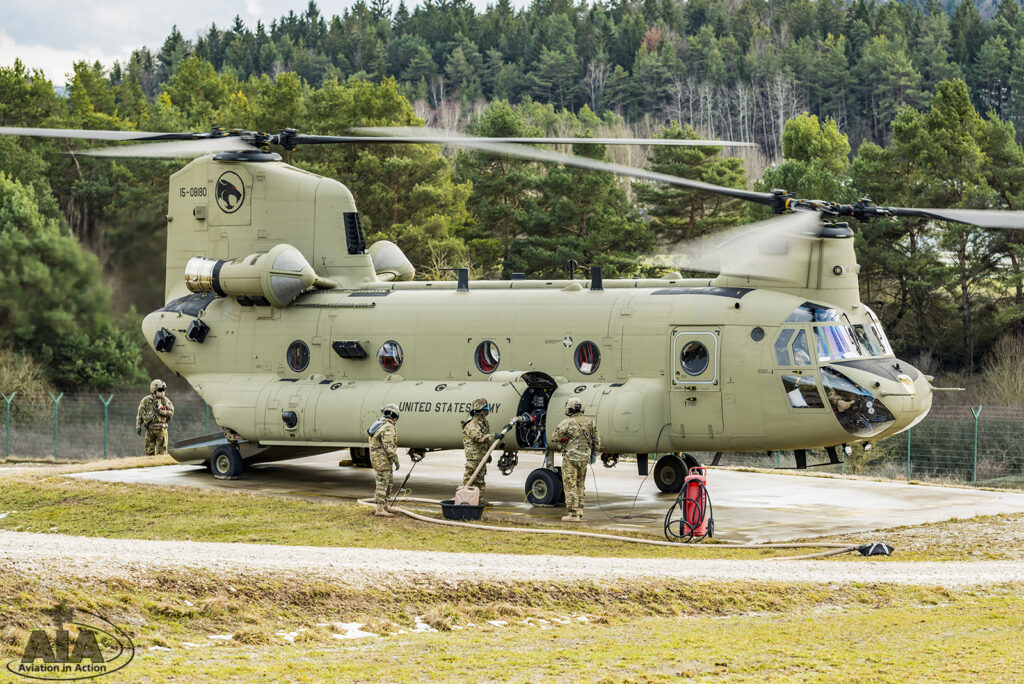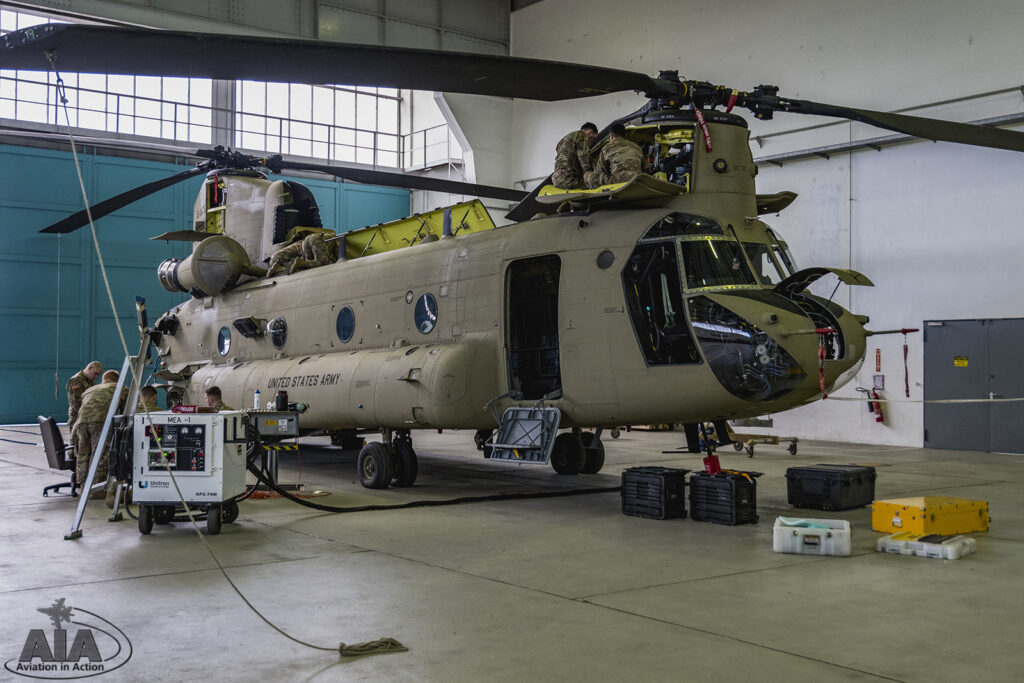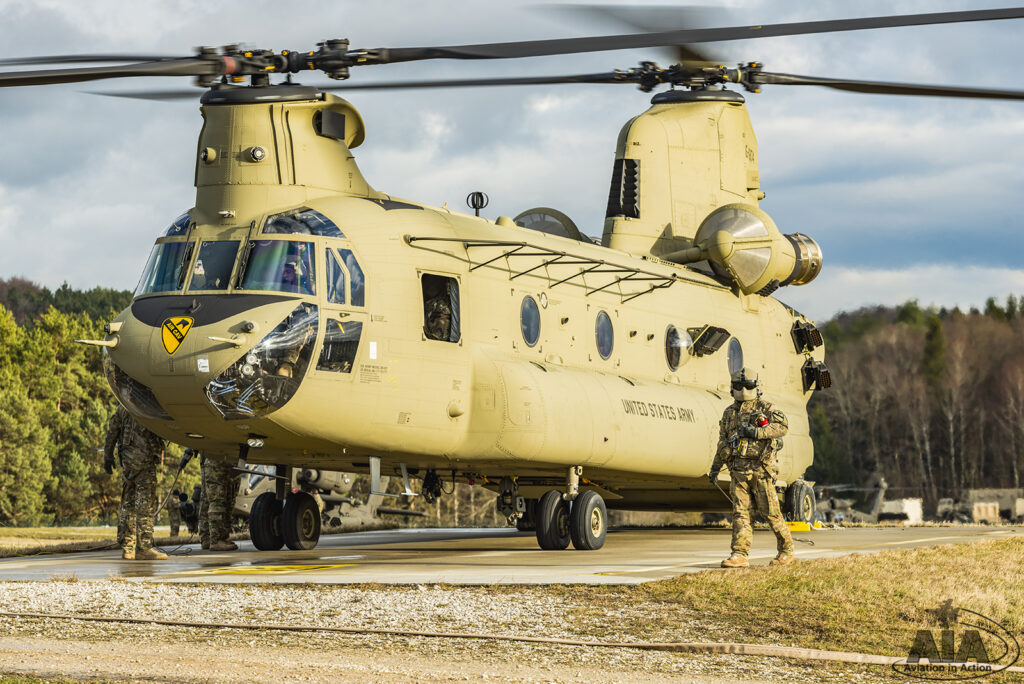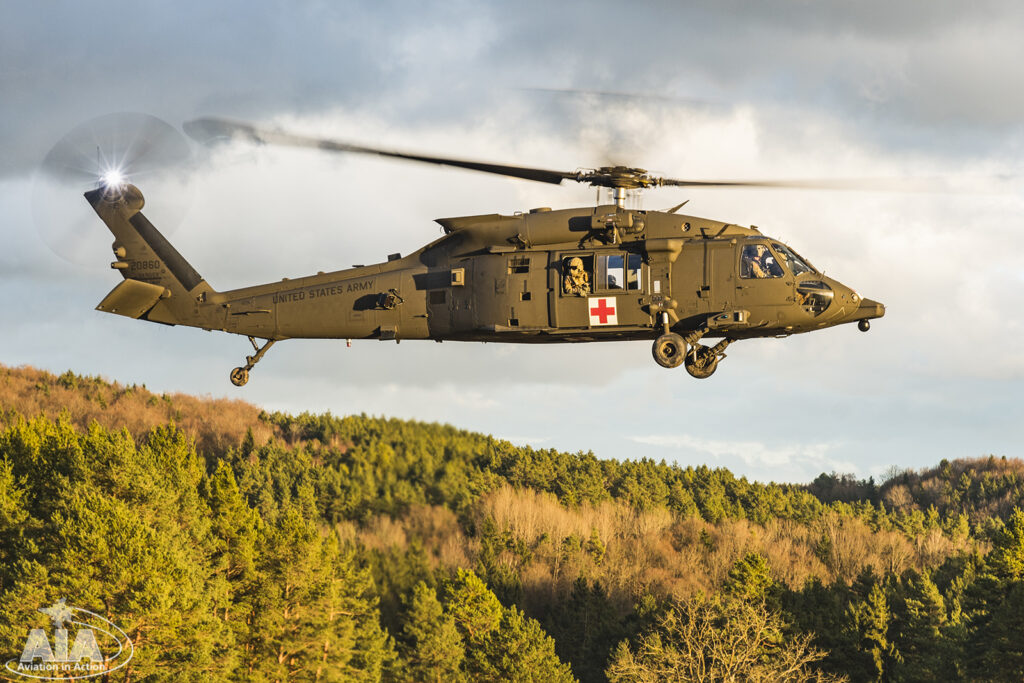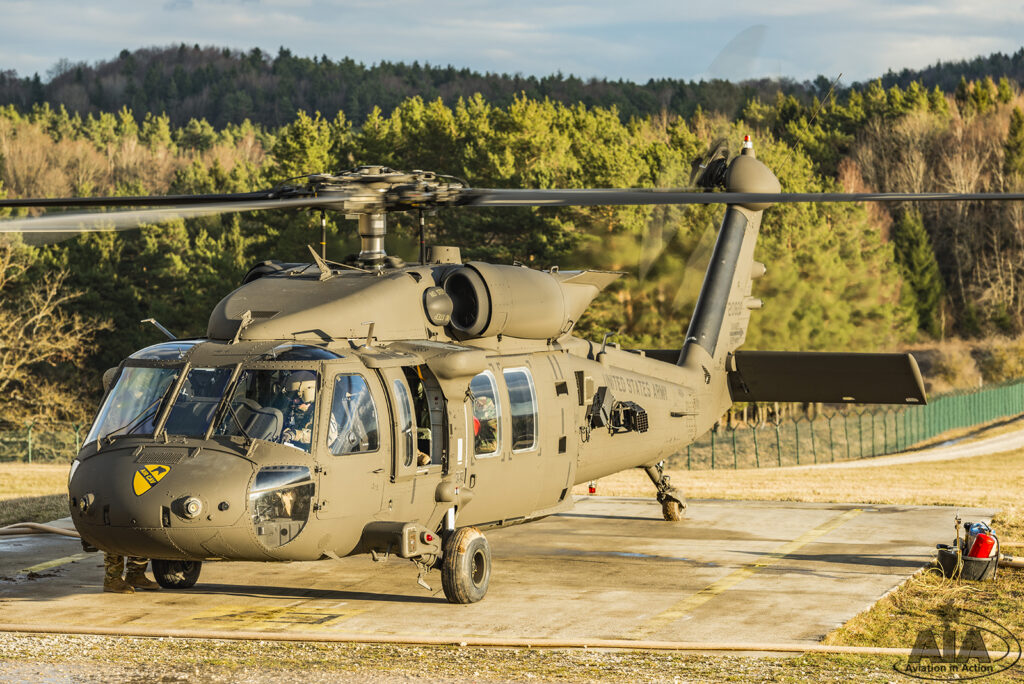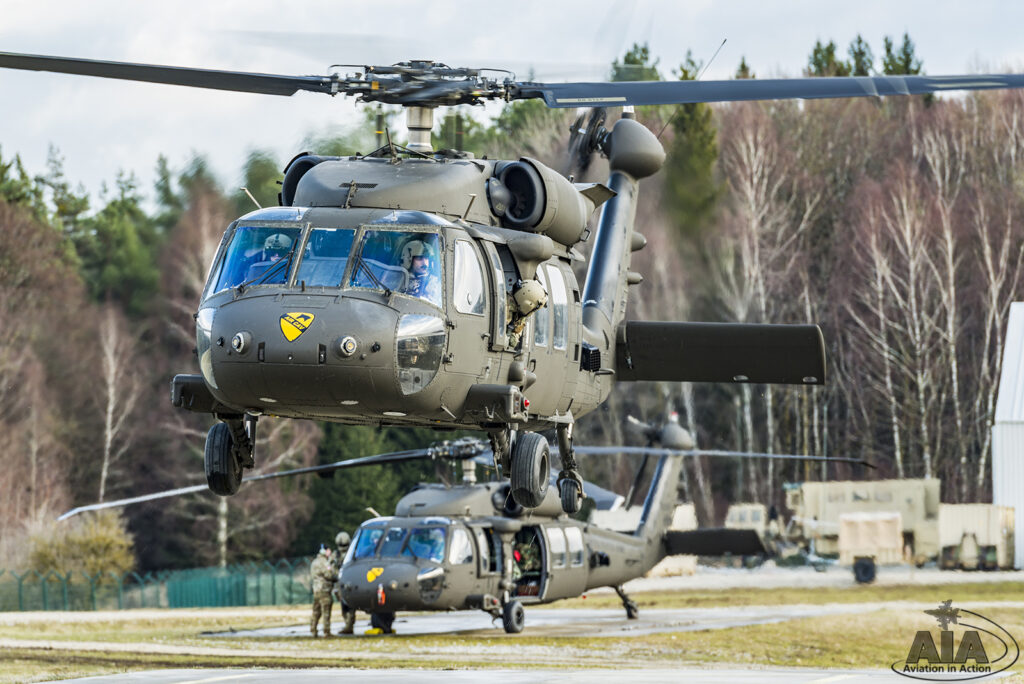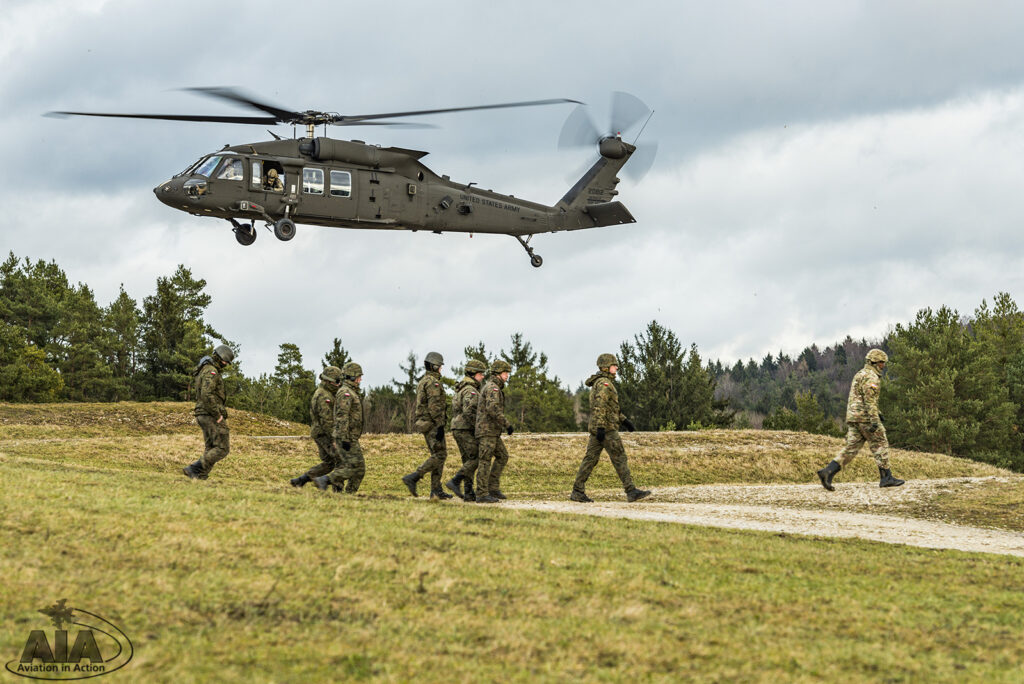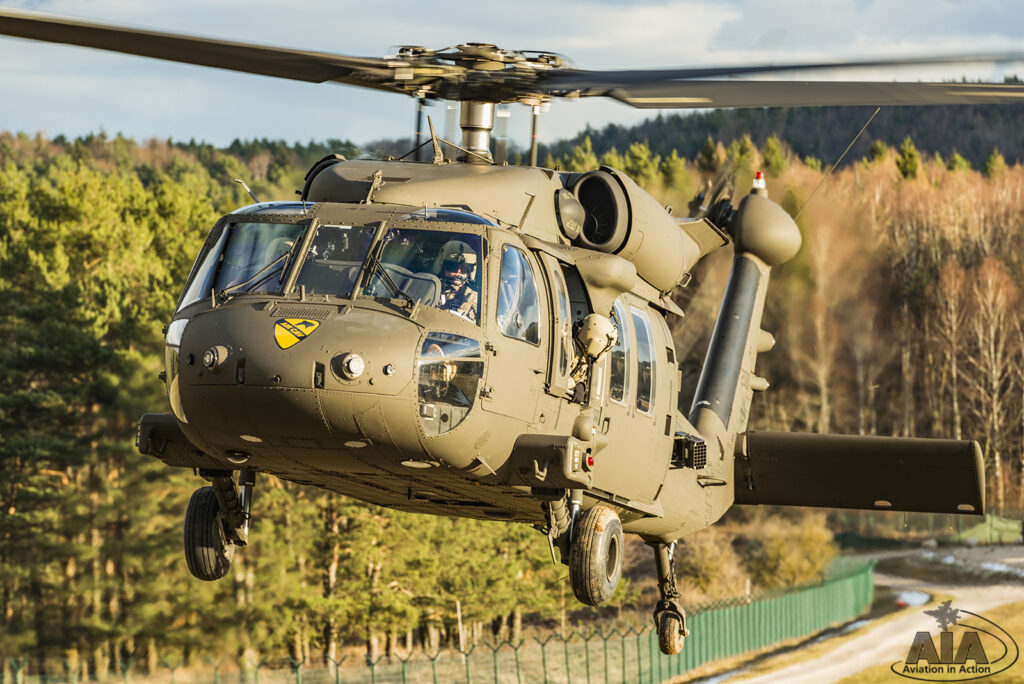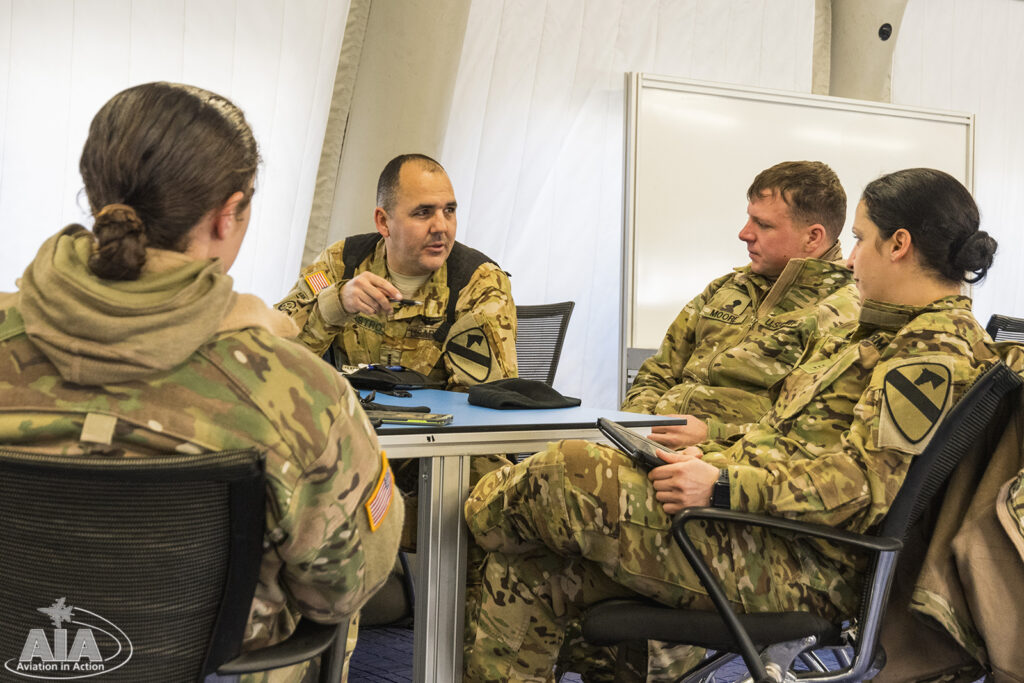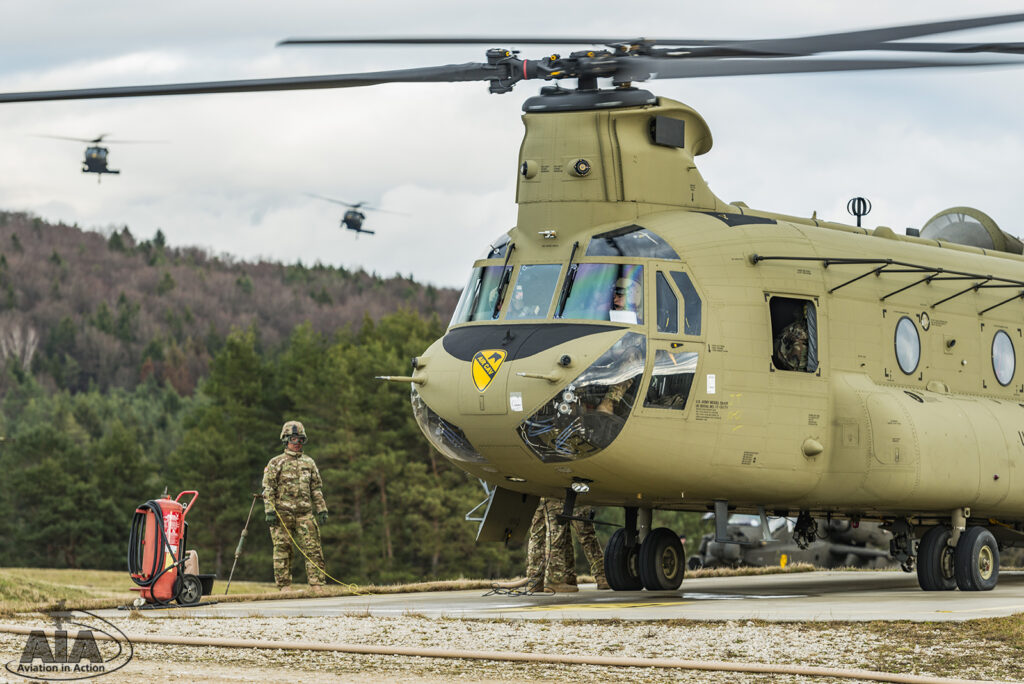1st Air Cavalry Brigade: Various Locations in Bavaria, Germany
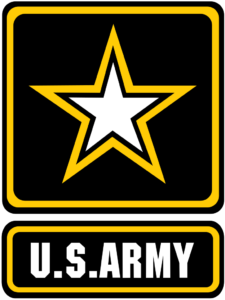

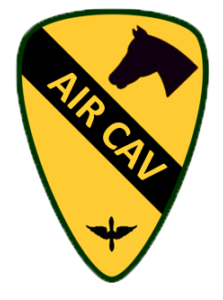
October 2017, the US Army deployed the 1st Air Cavalry Brigade on a nine month rotation to Europe seeing large numbers of Apaches, Chinooks and Black Hawks support Operation Atlantic Resolve. Aviation in Action reports from Germany on this impressive gathering of air power:
The Operation Atlantic Resolve mission is the United States continued commitment to peace, security and stability in Europe designed to reassure NATO Allies and its partners. Since 2015, the US has committed a number of Theatre Security Packages (TSP’s) to Europe consisting of aircraft, equipment and troops from all branches of the US Military. October 2017 saw the beginning of the US Army’s second nine month rotation, with the 1st Air Cavalry Brigade (1ACB) arriving en masse from their home base at Fort Hood, Texas into the United States European Command (EUCOM). Throughout 2017, the US Army’s 10th Aviation Brigade from Fort Drum, New York had been serving the first US Army rotation which drew to a close as 1ACB arrived to replace them.
The bulk of the sizeable force arrived by ship at the Port of Zeebrugge in Belgium on October 20th, at which a combined total of 77 helicopters were unloaded ranging from CH-47F Chinooks, AH-64E Apaches, UH-60L/M and HH-60M Black Hawks. Following their exit from the ship, the helicopters were reassembled and flown a short distance to US Army Garrison Benelux (Chièvres Air Base, Belgium) as described by CW4 Salvador Chavez, Apache pilot with 1ACB. A couple of days prior to the ship arriving, aircrews began flying into Belgium in preparation for the logistical transition ahead. They were then brought to the port of Zeebrugge as they gradually flew the helicopters to Chièvres as a staging base before pushing further West towards Germany. A further 12 helicopters (AH-64Es and UH-60Ms) were flown directly to Latvia and Poland aboard C-5M Galaxys. Joining the disembarkation process were a multitude of vehicles, containers and ground equipment needed to support the rotation over the coming 9 months. In total, 1ACB’s deployment comprised over 700 pieces of equipment, 1,900 personnel and 89 aircraft.
This US Army deployment marked a first for Europe as all of the 24 Apaches that arrived were the new Boeing AH-64E Apache Guardian. 1ACB were the only unit at the time in Europe to own and operate the Echo model of Apache, which in itself brang a whole new capability but as yet untested platform in European Theatre. Of the 24 on deployment, 20 took residence at Stork Barracks (Illesheim Army Airfield) in Germany, with the remaining four travelling by strategic air lift directly to Wroclaw, Poland before transiting up to their deployment location at Powidz Air Base.
Sub unit to 1ACB, all 24 aircraft belong to the 1st Attack Reconnaissance Battalion, 227th Aviation Regiment (1-227th AVN (ARB)), although the unit is further split into three subordinate flying companies: Alpha Company (A/1-227th AVN) known as the ‘Avengers’, Bravo Company (B/1-227th AVN) the ‘Reapers’ and Charlie Company (C/1-227th AVN) known as ‘Vampires’. 1-227th AVN has two further subordinate companies; the first being Delta Company ‘Bone Crushers’, in the aircraft support role responsible for general maintenance of all the Apaches in the Battalion, the second is Echo Company ‘Dark Horse’ specifically set up as a forward support company. Echo has the widest ranging mission within 1-227th AVN, providing refuelling, catering, vehicle maintenance and communications support.
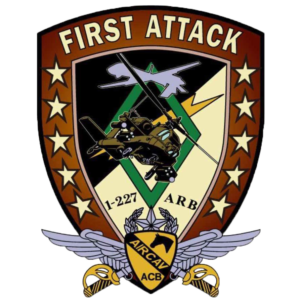
Whilst deployed in Europe for Operation Atlantic Resolve, 1-227th AVN and its Apaches undertook a number of training sorties as well as participated in international exercises to demonstrate and practise their capabilities. As CW4 Chavez explained, ”Right now our guys are doing Allied Spirit at JMRC Hohenfels, but Dynamic Front is coming up which is supposed to be February to March, then we have Joint Warfighter Assessment in April to May, so we will be involved in at least three major exercises”. Allied Spirit VIII saw participation from eight Apaches between January 15th and February 5th at the Joint Multinational Readiness Centre (JMRC) Hohenfels, Germany; an exercise that saw interoperability with Albanian, British, Canadian, Czech, Danish, Italian, Lithuanian, Polish and Romanian Forces, although the US Army were the only airborne unit. The exercise saw use of the Multiple Integrated Laser Engagement System (MILES) which was attached to aircraft, vehicles and troops. This created a digital environment where lasers and blank cartridges were used to simulate fire with receivers sounding when a target was hit. At JMRC, 1-227th Apache pilot 1LT Ethan Gleue highlighted, ”you can use all the Apache’s different weapons systems through MILES, so we could go and destroy a tank with a hellfire missile just like we could in real life, so it’s a really good way to train. There are also threats to us that could shoot us down by firing laser pulses at us”.
In addition to wide scale exercises, 1-227th conducted day to day training operations seeing them practise area and zone reconnaissance, air assault security escorts, hasty or delivered attacks, close air support and general handling. An element that was also undertaken was live firing enabling crews to qualify through their gunnery program, an event which occurred at Grafenwoehr Training Area, Germany. CPT Tyler G. Federwisch, 1-227th Apache pilot, outlined exactly what the crews went through; ”There are different levels of qualifications and we’re out here to shoot crew gunnery. So we qualify as a crew, two pilots in a two pilot aircraft and we’ll shoot multiple different qualifications with the same crew to get to a certain level. We’ll go out and shoot live rockets, we’ll shoot 30mm and we’ll get to do stationary fire, running fire, diving fire, all the different modes we use to practice technique and crew co-ordination as we talk to each other. We’ll then go back and watch the tape sitting with an instructor pilot or master gunner and go through everything about what we did right and what we did wrong”. Another big element to the gunnery training is the ability to fly for an extended period of time, something that a Forward Arming and Refuelling Point (FARP) set by 1ACB’s 615th Aviation Support Battalion (615th ASB) provides. SPC Cedric Ball spoke of the role they play, ”so an Apache will call in, then we’ll go out to the FARP and wait for the Apache to land so we can hook up and talk to the pilots, they’ll let us know how many bags of fuel they need, it’ll be one, two or three bags. We will go out there with all the PPE; goggles, gloves and ear protection, we have our fire guard with an extinguisher who stands about 15 feet away. Then we have the person who will hook up to the bird, he goes under the wing and bonds to the bird then we begin the transfer of fuel”.
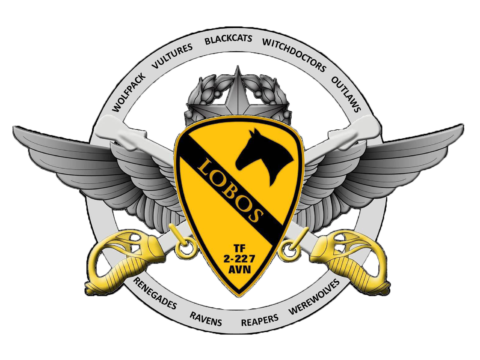
This US Army deployment marked a first for Europe as all of the 24 Apaches that arrived were the new Boeing AH-64E Apache Guardian. 1ACB were the only unit at the time in Europe to own and operate the Echo model of Apache, which in itself brang a whole new capability but as yet untested platform in European Theatre. Of the 24 on deployment, 20 took residence at Stork Barracks (Illesheim Army Airfield) in Germany, with the remaining four travelling by strategic air lift directly to Wroclaw, Poland before transiting up to their deployment location at Powidz Air Base.
Sub unit to 1ACB, all 24 aircraft belong to the 1st Attack Reconnaissance Battalion, 227th Aviation Regiment (1-227th AVN (ARB)), although the unit is further split into three subordinate flying companies: Alpha Company (A/1-227th AVN) known as the ‘Avengers’, Bravo Company (B/1-227th AVN) the ‘Reapers’ and Charlie Company (C/1-227th AVN) known as ‘Vampires’. 1-227th AVN has two further subordinate companies; the first being Delta Company ‘Bone Crushers’, in the aircraft support role responsible for general maintenance of all the Apaches in the Battalion, the second is Echo Company ‘Dark Horse’ specifically set up as a forward support company. Echo has the widest ranging mission within 1-227th AVN, providing refuelling, catering, vehicle maintenance and communications support.
Bravo Company (B/2-227th AVN) known as the ‘Black Cats’, operate the CH-47F Chinook under the 2-227th, having arrived into Europe with 12 of the type. Whilst at Hohenfels during Exercise Allied Spirit VIII CW3 Witt Taylor, Chinook Pilot with B/2-227th who’d forward deployed with four airframes mentioned the roles the Chinook undertook during the Exercise and the wider nine month rotation; ”our four big missions are resupply, air movement of troops where we can carry up to 30 passengers, air assault air movement where we can carry troops or up to 20,000lbs of equipment either internally or externally and then we do a Fat Cow operation which allows us to refuel vehicles and aircraft from a ground position”.
He further went on to outline who they worked with specifically during Allied Spirit, ”we are going to be flying some foreign troops around, some of the Special Forces guys and some Polish Joint Tactical Air Controller (JTAC) guys, we are down to circulate them around the battlefield so they have a better idea of what they’re up against”. Interestingly CW3 Taylor explained a crucial role the Chinooks undertook during their time in Europe was to assist the 12th Combat Aviation Brigade (12 CAB), who are permanently stationed at Katterbach, due to them being stretched very thin with tasking’s across Europe, so Bravo Company picked up a number of their missions.
Providing the aeromedical evacuation (MEDEVAC) role for the Lobos were Charlie Company (C/2-227th AVN), the ‘Witch Doctors’ who operate the HH-60M Black Hawk. Along on the nine month rotation were 15 HH-60Ms who on order provide direct aeromedical evacuation support to US and Coalition Forces during combat and contingency operations. They specifically undertake emergency air movement of essential medical personnel and equipment throughout the area of operations including medical resupply to troops on the ground. Lastly, they assist with MEDEVAC duties in support of disaster relief throughout the United States. Many of these roles were executed throughout the rotation and during all the major exercises the Witch Doctors were involved with.
1ACB’s last flying subunit is known as the ‘Spearhead’, a specific assault battalion with a 30 strong fleet of UH-60Ls, all of which travelled to Europe. The 3rd Assault Helicopter Battalion, 227th Aviation Regiment (3-227th AVN (ASLT)) is split into three flying companies, Alpha (A/3-227th AVN) the ‘Werewolves’, Bravo (B/3-227 AVN) the ‘Jokers’ and Charlie (C/3-227 AVN) the ‘Ghostriders’. Of the deployed Black Hawks, 16 were stationed at Stork Barracks, Illesheim whilst the other 14 deployed to Eastern Europe. Five UH-60Ms arrived by strategic airlift at Lievarde Air base in Latvia, four again arrived by C-5M into Wroclaw, Poland before transiting to Powidz Air Base and the remaining five forward deployed under their own power from Illesheim to Mihail Kogainiceanu Air Base in Romania.
Whilst on deployment, crews from the 3-227th conducted air assault training both in Germany and at their forward deployed locations. The main air assault event however occurred during Exercise Dynamic Front at Grafenwoehr; it saw multiple UH-60Ms take off with troops on board head towards to the operating area at where they seized and held key terrain which hadn’t been fully secured to directly engage with enemy forces behind enemy lines. This exercise was specifically about assault and also saw participation from the Apache companies. Whilst in Europe, 3-227th conducted further training that included slope operation training and landings, sling loading whilst working with the likes of Polish, Romanian and Latvian Air Force’s and/or Army’s.

As summarised by CW4 Chavez, the purpose of the US Army’s and the 1st Air Cav’s presence in Europe was to help reassure their partners and allies whilst working in a joint environment and being able to verify interoperability with them making sure that US systems work seamlessly with their allies. But most importantly focussing on the Atlantic Resolve mission set, the deployment installed confidence through the training as CPT Federwisch added, ”our primary mission here is to train with our partners, build those relationships and be a deterrence to anybody who might want to show aggression towards our allies”. 1ACB continued their deployment through to June/July 2018 seeing out their nine month stint before wrapping up and returning the huge logistical operation back to Fort Hood in Texas.
Aviation In Action would like to thank the following for making this report possible:
- 1st Lt. Jena Brown, 1ACB Public Affairs Officer
- 1st Lt. Jessica Arteaga, 1ACB Public Affairs Officer
- All pilots and crew we interviewed for their time and insights
- All the men and women of 1ACB for showing us great hosptitality and allowing the opportunity to spend time with them on the rotation


